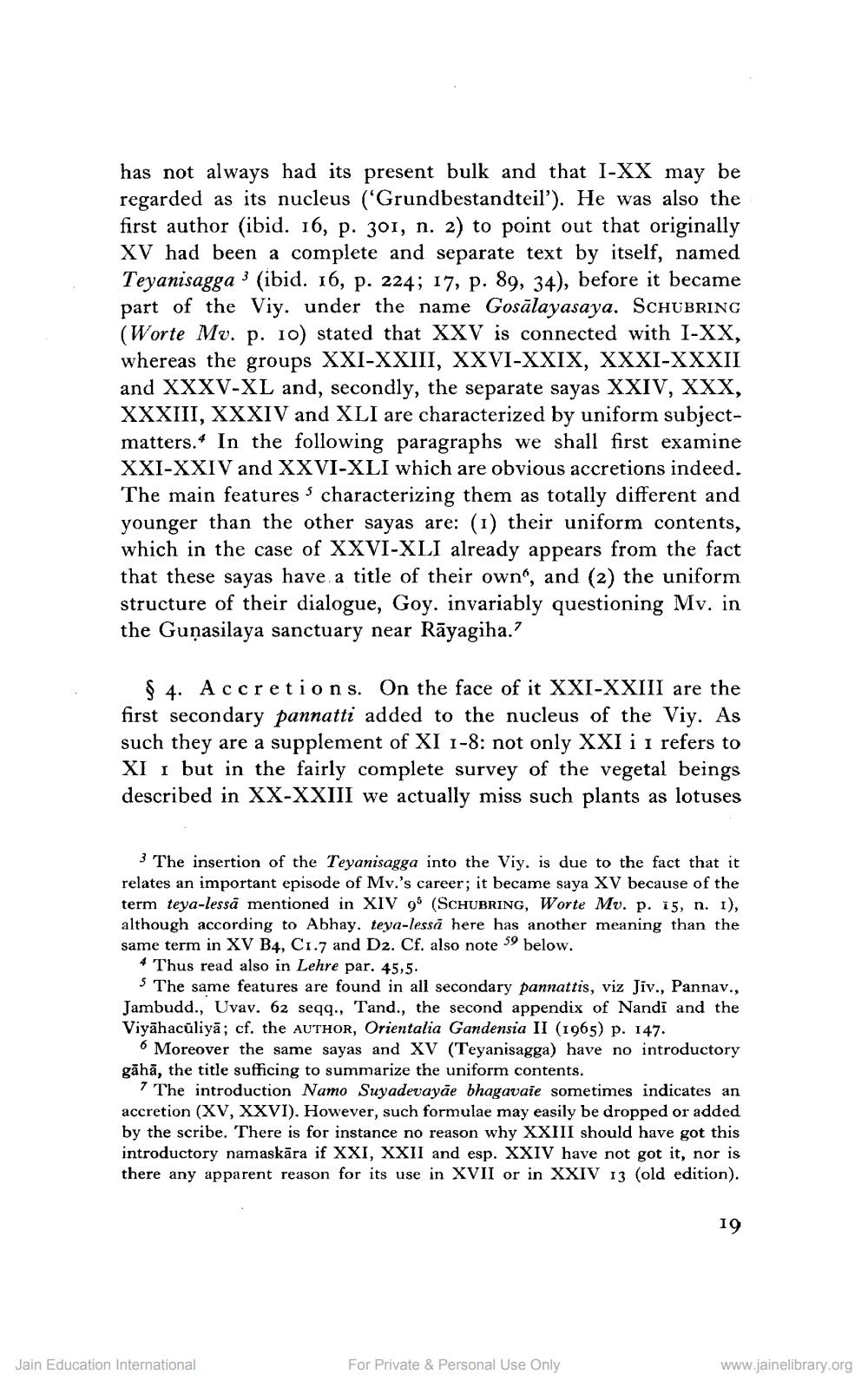________________
has not always had its present bulk and that I-XX may be regarded as its nucleus ('Grundbestandteil'). He was also the first author (ibid. 16, p. 301, n. 2) to point out that originally XV had been a complete and separate text by itself, named Teyanisagga 3 (ibid. 16, p. 224; 17, p. 89, 34), before it became part of the Viy. under the name Gosalayasaya. SCHUBRING (Worte Mv. p. 10) stated that XXV is connected with I-XX, whereas the groups XXI-XXIII, XXVI-XXIX, XXXI-XXXII and XXXV-XL and, secondly, the separate sayas XXIV, XXX, XXXIII, XXXIV and XLI are characterized by uniform subjectmatters. In the following paragraphs we shall first examine XXI-XXIV and XXVI-XLI which are obvious accretions indeed. The main features characterizing them as totally different and younger than the other sayas are: (1) their uniform contents, which in the case of XXVI-XLI already appears from the fact that these sayas have a title of their own", and (2) the uniform structure of their dialogue, Goy. invariably questioning Mv. in the Gunasilaya sanctuary near Rāyagiha.'
§4. Accretions. On the face of it XXI-XXIII are the first secondary pannatti added to the nucleus of the Viy. As such they are a supplement of XI 1-8: not only XXI i I refers to XI 1 but in the fairly complete survey of the vegetal beings described in XX-XXIII we actually miss such plants as lotuses
3 The insertion of the Teyanisagga into the Viy. is due to the fact that it relates an important episode of Mv.'s career; it became saya XV because of the term teya-lessa mentioned in XIV 95 (SCHUBRING, Worte Mv. p. 15, n. 1), although according to Abhay. teya-lessa here has another meaning than the same term in XV B4, C1.7 and D2. Cf. also note 59 below.
4 Thus read also in Lehre par. 45,5.
5 The same features are found in all secondary pannattis, viz Jiv., Pannav., Jambudd., Uvav. 62 seqq., Tand., the second appendix of Nandi and the Viyahaculiyā; cf. the AUTHOR, Orientalia Gandensia II (1965) p. 147.
❝ Moreover the same sayas and XV (Teyanisagga) have no introductory gāhā, the title sufficing to summarize the uniform contents.
7 The introduction Namo Suyadevayae bhagavate sometimes indicates an accretion (XV, XXVI). However, such formulae may easily be dropped or added by the scribe. There is for instance no reason why XXIII should have got this introductory namaskāra if XXI, XXII and esp. XXIV have not got it, nor is there any apparent reason for its use in XVII or in XXIV 13 (old edition).
Jain Education International
For Private & Personal Use Only
19
www.jainelibrary.org




